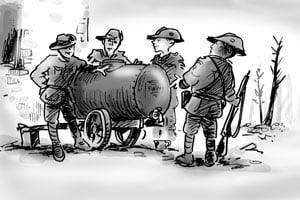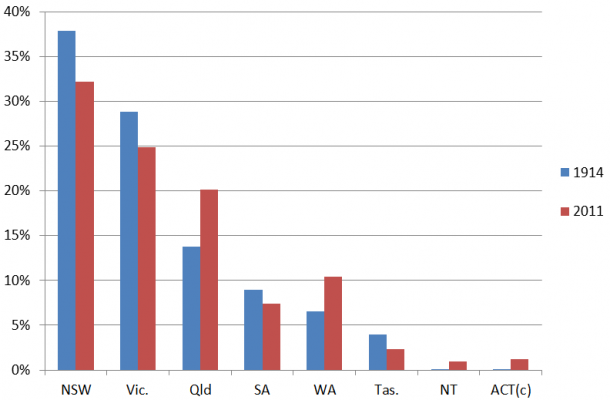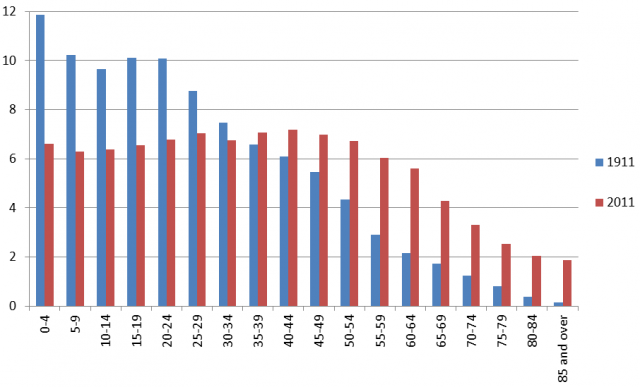We recently marked the centenary of the beginning of World War I. We thought we would take a look back and see what was happening in Australia and what the population of Australia was like in 1914, at the outbreak of war. Hopefully it will give some more context in which to view the impacts of the War.

Joseph Cook was Prime Minister, a Liberal MP from the Parramatta area. He lost the 1914 Federal election held in September, and Andrew Fisher from the Labor Party won the Prime Ministership (he was from the Wide Bay area in Queensland). Melbourne was still the administrative capital of Australia; Canberra was yet to be built. Also, Australia was suffering its worst drought to that point in history and thus had very low agricultural yields. The population of Australia in 1914 was 4,948,990 and the current official population is 23,135,281. That’s growth of just under 370%! New South Wales had by far the largest proportion of the population, it still did at the 2011 Census, but its dominance has decreased, as you can see in the graph below.

The age structure of the Australian population in 1911 (the closest Census year) was much, much younger, with 0-4 year olds being the largest group. In 2011, the largest age group was those aged 40-44.

The crude birth rate (number of births per 1,000 population) was 27.9 in 2014 and 13.6 in 2012. So we are having roughly half the number of babies per 1,000 population as we were before the start of World War I. There are a huge number of reasons for the decline in fertility levels in Australia, but one is the decline in infant mortality. In 1914 this was 71.5 infant deaths per 1,000 live births, and decreased dramatically to only 3.3 in 2012. Life expectancy has also changed dramatically since 1914 when it was 55.2 years for males and 58.8 for females. Current life expectancy figures for 2012 state 79.9 years for men and 84.3 years for women. It’s hard to imagine life expectancy being less than retirement age (which was 65 in 1914) Today, Australia has much cultural diversity, but in 1914 Australia was under the White Australia Policy. At the 2011 Census, 24.6% of the Australian population reported being born overseas, compared to 17.7% in the 1911 Census. Below is a comparison of the top 10 countries of birth:
Australia was a very different country in 1914, which is why the impacts of World War I were so devastating. These impacts will be looked at from a demographic perspective in an up coming blog! To access detailed demographic information about populations across Australia, visit our online demographic resource centre.












